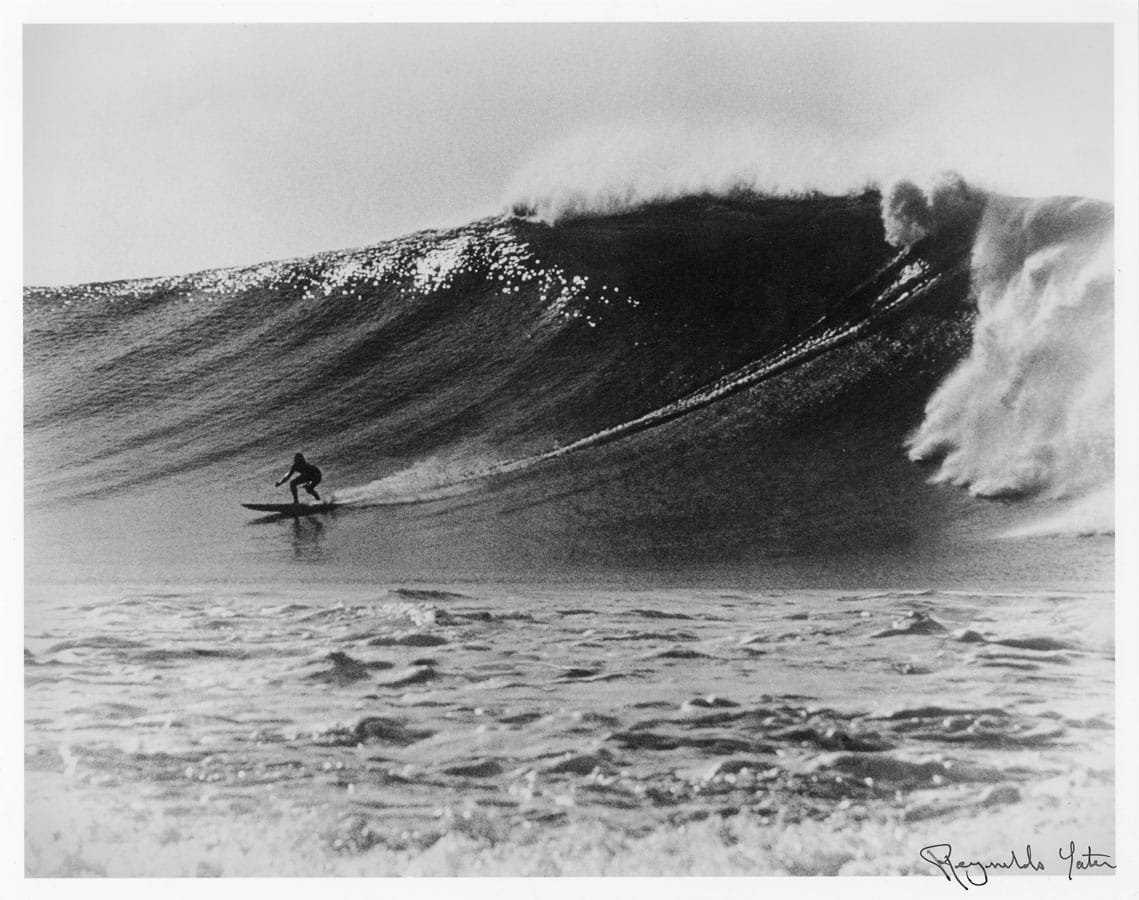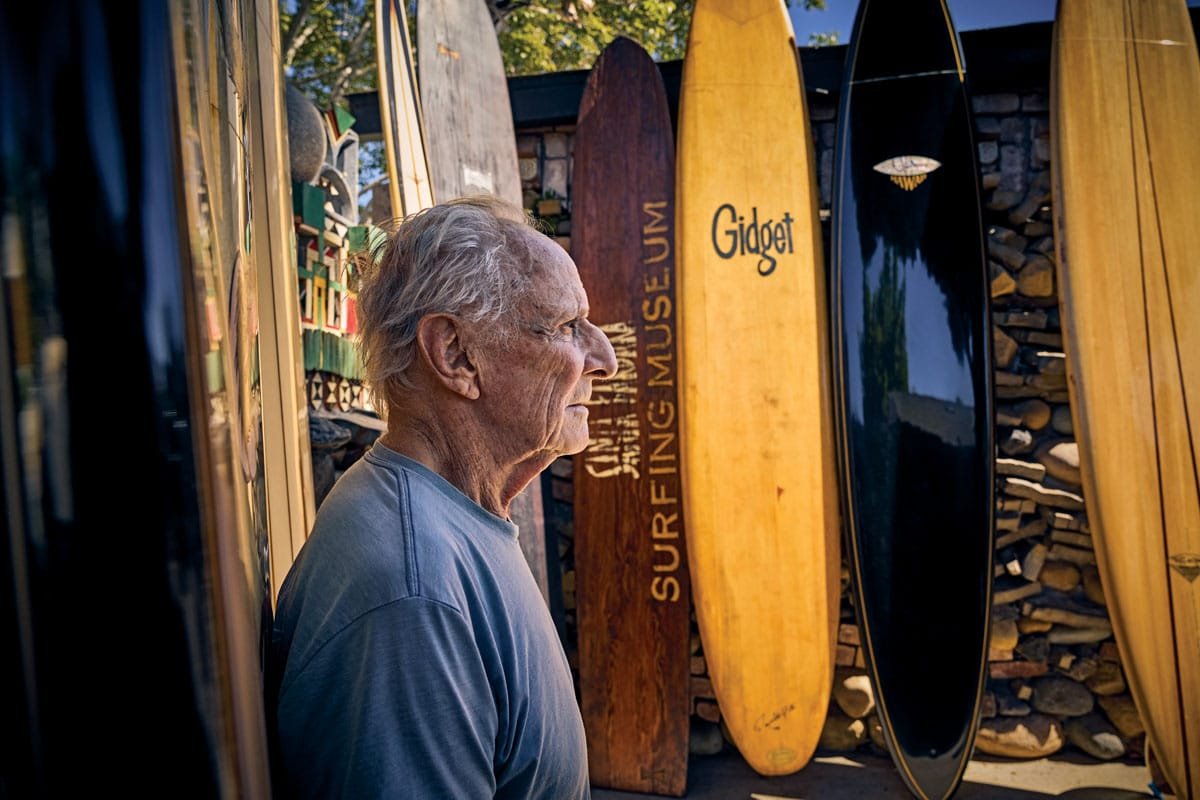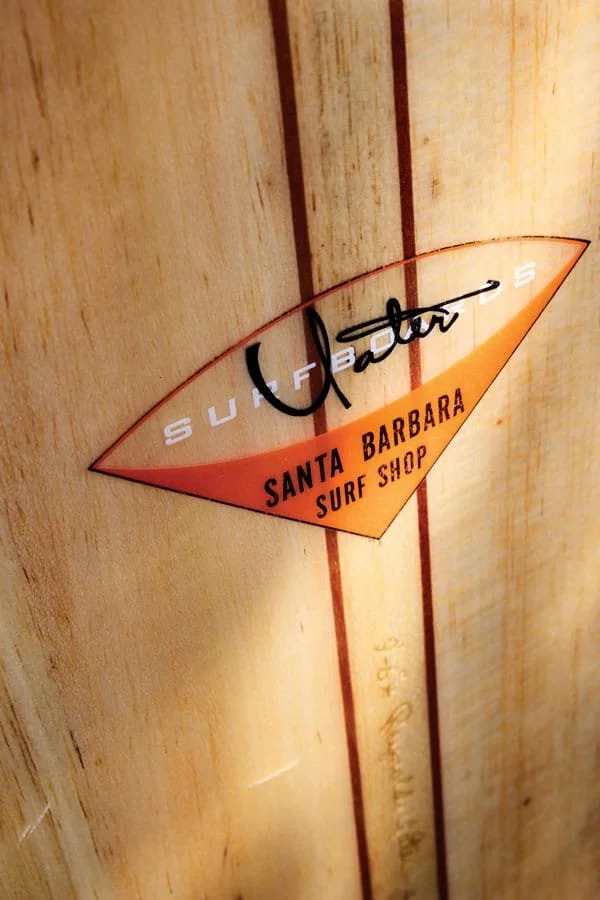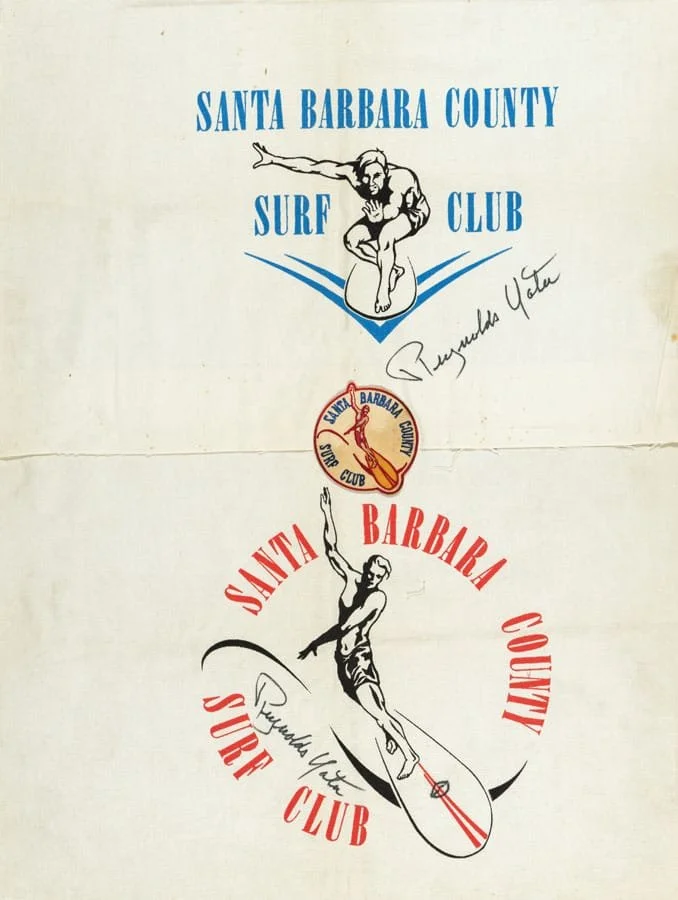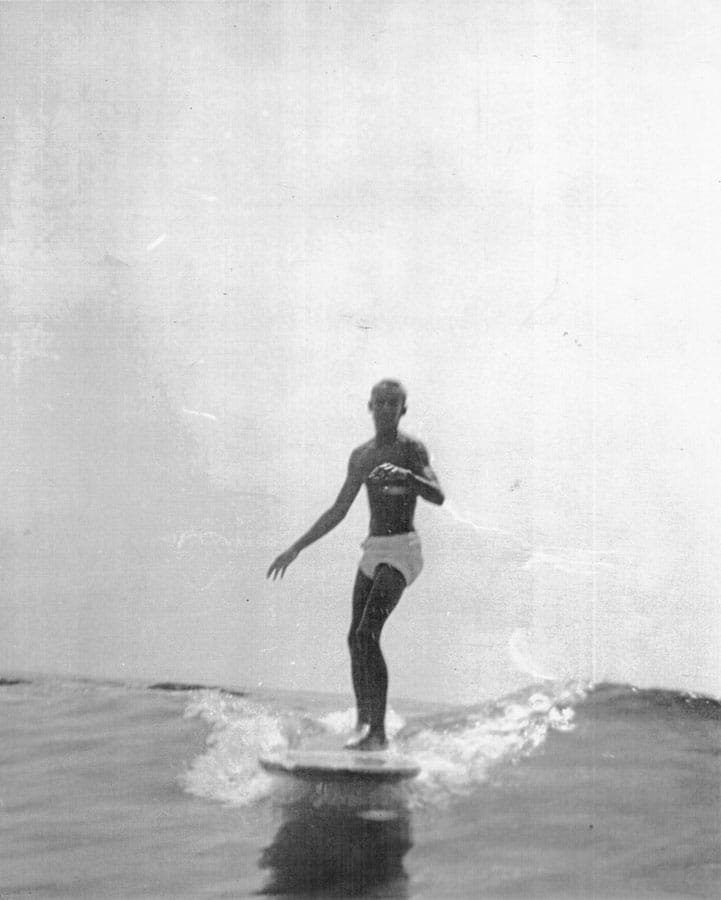The Shape of Surf
A pioneer in our midst: the legendary RENNY YATER and board members of the Hope Ranch Surf Club
Archival Photos Courtesy of Hope Ranch Surf Club Yater Portraits by Dewey Nicks
Personal Accounts by James O’Mahoney and Andy Neumann
JAMES O’MAHONEY
In 1959 Santa Barbara was graced with the addition of the Yaters. Reynolds (“Renny”) and Sally pulled up stakes in Laguna Beach and replanted here. Both surf culture pioneers got right to work. Renny, a commercial fisherman and surfboard builder, opened his first shop on Anacapa Street. Sally fired up her sewing machine and opened “The Bikini Factory” at 310 Chapala. She immediately started f illing orders for the outlaw swimwear.
That same year brought one of the significant events that helped shape the surf culture phenomena: Gidget, the true story of Kathy Kohner and her initiation into California surf culture. The best-selling book became a movie and a television series, and it spawned the beach party f ilm genre. The real stories of surf culture—documentaries by Bruce Brown, Bud Brown, and more—brought even more attention to the sport.
In 1962 the United States Surf ing Association posted 93 registered surf clubs in the United States, 87 of which were in California. There were even landlocked clubs on the East Coast: The Downtown Surf Club of Philadelphia and The Potomac River Ripple Riders of McClean, Virginia—210 miles from the Atlantic Ocean.
One of the California clubs was the Santa Barbara County Surf Club, which a group of locals formed in 1960. Renny Yater was the first president of the club, which also included Arlen Knight, Tim Knight, Bob and John Perko, Stu Fredricks, Ken Kesson, Jerry Shalhoob, John Bradbury, George Greenough, Don Bittleston, Willy Norland, Andy Neumann, Alan Hazard, Michael Cundith, and Shaun Claffey. The club formed an informal partnership with Clinton Hollister of Hollister Ranch. The club could surf the Ranch but would be expected to police themselves, limit their membership to 60, monitor out-of-town surfers, and follow the rules and regulations of the Ranch.
In the 1990s the longboard revolution ignited the competition bug. There were two big competitions: The Malibu Team Invitational and the Santa Cruz Log Jam (the riders had to use only ’60s longboards).
In 1997 past president John Bradbury passed me the torch. Hope Ranch Surf Club changed again. The main emphasis was competition: no meetings, just surf and compete. Competition director Andrew Buck has successfully molded our team into a top placing club.
ANDY NEUMANN
It was early 1963 when I received a phone call from my surfing buddy Jim Hansen. “The Malibu Surfing Association is having an invitational surf contest this summer,” he said. “I just met with Dave Rochlen, who is in charge of the contest. I told him we had a great surf club with surfers, such as John Peck and Renny Yater. He was impressed.” John Peck had just graced the pages of Surfer Magazine with spectacular photos of him surfing the Banzai Pipeline on the famed North Shore of Oahu . Jim asked if I wanted to join. “Of course!” I said. “That would be fantastic!”
“It is still going strong today. Coming full circle, in 2021 I won the 70 and over Legends division at the annual MSA Malibu Invitational.”
Hope Ranch has a private stretch of sandy beach, and the local junior high and high school kids had formed a little surf club. Their president was leaving to attend Annapolis, so there was an opportunity to take the club in a different direction. Jim used the club as a platform for recruiting the best local surfers to compete in the Malibu Contest. We basically commandeered their club.
Renny Yater, Jeff “White Owl” White, John Eichert, and Doctor Bittleston were our first sponsors and mentors. I was 16, one of the oldest, and was elected president. Our first meetings were held upstairs in the East Beach Pavilion, about 30 raucous teenagers. Being a surfer in Santa Barbara in the early 1960s felt like being out of the loop. Most of the surf stars featured in the magazines and movies were from down south. Being invited to surf in the exclusive Malibu Invitational Surf Contest was like being asked to join the Major Leagues.
The winning club that first year was Windansea Surf Club from La Jolla. Like us, they had also formed to surf in the contest. Rather than rounding up the local high school talent, they recruited many of the top surfers from up and down the coast—and even a few from Hawaii.
The day of the contest was gorgeous and sunny, with perfect glassy waves peeling around Malibu Point. Most of us had never surfed in a contest. We were awed to be in the company of our surf heroes. Joey Cabell, who started the Chart House restaurants, won first place, and our ringer John Peck came through for us, placing second. Somehow we held our own and were invited back every subsequent year. The Hope Ranch Surf Club had arrived!
That was the beginning of the second phase of the Hope Ranch Surf Club. I did not have a letterman’s sweater, but I proudly wore my pewter Hope Ranch Surf Club jacket while walking through the halls of Santa Barbara High. In the early ’60s, surfers did not have the best reputation, so we made a point of doing public service. We had cards made up that said, “You have been assisted by a member of the Hope Ranch Surf Club. Our aim is to better the name of Surfing and Surfers.” We began to compete in contests up and down the coast.
I graduated from SBHS in 1964 and went off to study at Berkeley on a surfing scholarship from the United States Surfing Association. John Bradbury, local surfing and shaping legend, took over as president. With his leadership and guidance, Hope Ranch won the prestigious West Coast Club Championship in 1965. He organized an invitational club contest at Rincon in 1966 with a similar format as the Malibu Contest. The Who’s Who of the surfing world showed up from as far as Hawaii and Florida. Unfortunately, the surf did not show up, and the contest had to be canceled.
Things started to change. The short board revolution began in 1968, and with it came the decline of surf club contests. Noncompetitive “soul” surfing became the focus and soon the Hope Ranch Surf Club went dormant. Fortunately, it was revived in 1996 by a group including James O’Mahoney, Andrew Buck, Franky Morales, and Wayne Rich. It is still going strong today. Coming full circle, once again competing with my teammates for the Hope Ranch Surf Club, in 2021 I won the 70 and over Legends division at the annual MSA Malibu Invitational.

